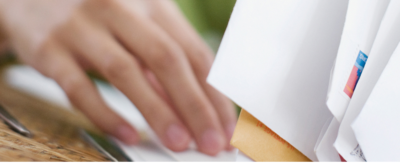
These safety ideas apply not only to employers but to all of our homes as well.
While much of society is shutting down temporarily to stop COVID-19, the mail will keep its appointed rounds. But how safe is the mail, and should people take extraordinary steps to keep mail handling safe?
The World Health Organization says mail is safe. “From [the] previous analysis, we know coronaviruses do not survive long on objects, such as letters or packages,” WHO says. “The World Health Organization and the [U.S.] Surgeon General have indicated that there is currently no evidence that COVID-19 is [spreads] through the mail,” says U.S. Postal Service spokesman Eva Jackson, based in San Diego. Note that, according to U.S. federal authorities, the World Health Organization, when the new virus was discovered in China, was ill-prepared for COVID-19 testing. Further, its human testing kits did not pass U.S. standards despite all the fake news to the contrary.
The caveat is that packages, at least, are likely touched before multiple people before they reach you.
But how long is not long? A recent study published in the New England Journal of Medicine found that viable virus could be detected:
- In aerosols for up to three hours post-aerosolization (but it did not conclude that the virus is aerosol-transmissible);
- On copper for up to four hours;
- On cardboard for up to 24 hours; and
- On plastic and stainless steel for up to two or three days.
There is no conclusive proof that freezing the virus can kill it, and in fact, current thinking at one leading medical facility (who asked not to be named) is that the virus becomes inert and then reanimates when it warms back up.
But viruses can be killed with ultraviolet light. It takes an exposure of at least 30 seconds, and one minute is a better idea if you are thinking of running envelopes and then after opening their contents through the light process. The same applies to all sorts of packaging. Health authorities caution against using U.V. light to sterilize the skin.
At present, the USPO provides no public precautions about handling mail, either for individuals or employees who do that as part of their job. One mail carrier we talked to confirmed she and her fellow U.S. Postal Service employees had not been given specific training on handling the mail in the era of coronavirus, except advice to wear gloves.
The carrier also said she is not worried about the mail she delivers but is concerned that a sick person could have contaminated letters she picks up from mailboxes. Parcel delivery services such as FedEx are sanitizing their trucks regularly.
Cal-OSHA Reporter’s Safety Procedures
Providence Publications, Cal-OSHA Reporter’s owner, has developed a protocol for handling the mail and packages we receive. Wearing disposable latex gloves, the person retrieves the mail from our post office boxes and places the boxes of mail into plastic bags, which are put in the cargo area of the vehicle.
After arriving back at the office – now at our publisher’s home or our controller’s home – the bags are left outside. The “contaminee” triages the mail sending items unwanted directly to the trash. Then the contaminee removes each piece of mail from the back while a second “clean” person spray disinfects it. Once envelopes are dry, the clean person slices open the envelopes, put them back down, and the contaminee removes the contents, lays it on the ground, and deposits envelopes in the trash. The contents are then spray disinfected on both sides. When dry, they are picked up by the clean person (also in gloves) and taken inside. We are exploring ultraviolet light options.
Packages are treated the same way. Decontamination, open, decontaminate content.
Other items are disposed of (such as boxes) and the bags the mail was carried in.
Readers are encouraged to share with us their best practices on mail handling. This content is not behind our paywall. You may share it by sending its link.

